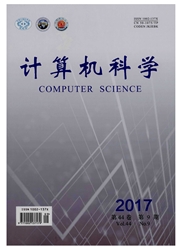

 中文摘要:
中文摘要:
Data deduplication,as a compression method,has been widely used in most backup systems to improve bandwidth and space efficiency.As data exploded to be backed up,two main challenges in data deduplication are the CPU-intensive chunking and hashing works and the I/O intensive disk-index access latency.However,CPU-intensive works have been vastly parallelized and speeded up by multi-core and many-core processors;the I/O latency is likely becoming the bottleneck in data deduplication.To alleviate the challenge of I/O latency in multi-core systems,multi-threaded deduplication (Multi-Dedup) architecture was proposed.The main idea of Multi-Dedup was using parallel deduplication threads to hide the I/O latency.A prefix based concurrent index was designed to maintain the internal consistency of the deduplication index with low synchronization overhead.On the other hand,a collisionless cache array was also designed to preserve locality and similarity within the parallel threads.In various real-world datasets experiments,Multi-Dedup achieves 3-5 times performance improvements incorporating with locality-based ChunkStash and local-similarity based SiLo methods.In addition,Multi-Dedup has dramatically decreased the synchronization overhead and achieves 1.5-2 times performance improvements comparing to traditional lock-based synchronization methods.
 英文摘要:
英文摘要:
Data deduplication, as a compression method, has been widely used in most backup systems to improve bandwidth and space efficiency. As data exploded to be backed up, two main challenges in data deduplication are the CPU-intensive chunking and hashing works and the I/0 intensive disk-index access latency. However, CPU-intensive works have been vastly parallelized and speeded up by multi-core and many-core processors; the I/0 latency is likely becoming the bottleneck in data deduplication. To alleviate the challenge of I/0 latency in multi-core systems, multi-threaded deduplication (Multi-Dedup) architecture was proposed. The main idea of Multi-Dedup was using parallel deduplication threads to hide the I/0 latency. A prefix based concurrent index was designed to maintain the internal consistency of the deduplication index with low synchronization overhead. On the other hand, a collisionless cache array was also designed to preserve locality and similarity within the parallel threads. In various real-world datasets experiments, Multi-Dedup achieves 3-5 times performance improvements incorporating with locality-based ChunkStash and local-similarity based SiLo methods. In addition, Multi-Dedup has dramatically decreased the synchronization overhead and achieves 1.5-2 times performance improvements comparing to traditional lock-based synchronization methods.
 同期刊论文项目
同期刊论文项目
 同项目期刊论文
同项目期刊论文
 期刊信息
期刊信息
